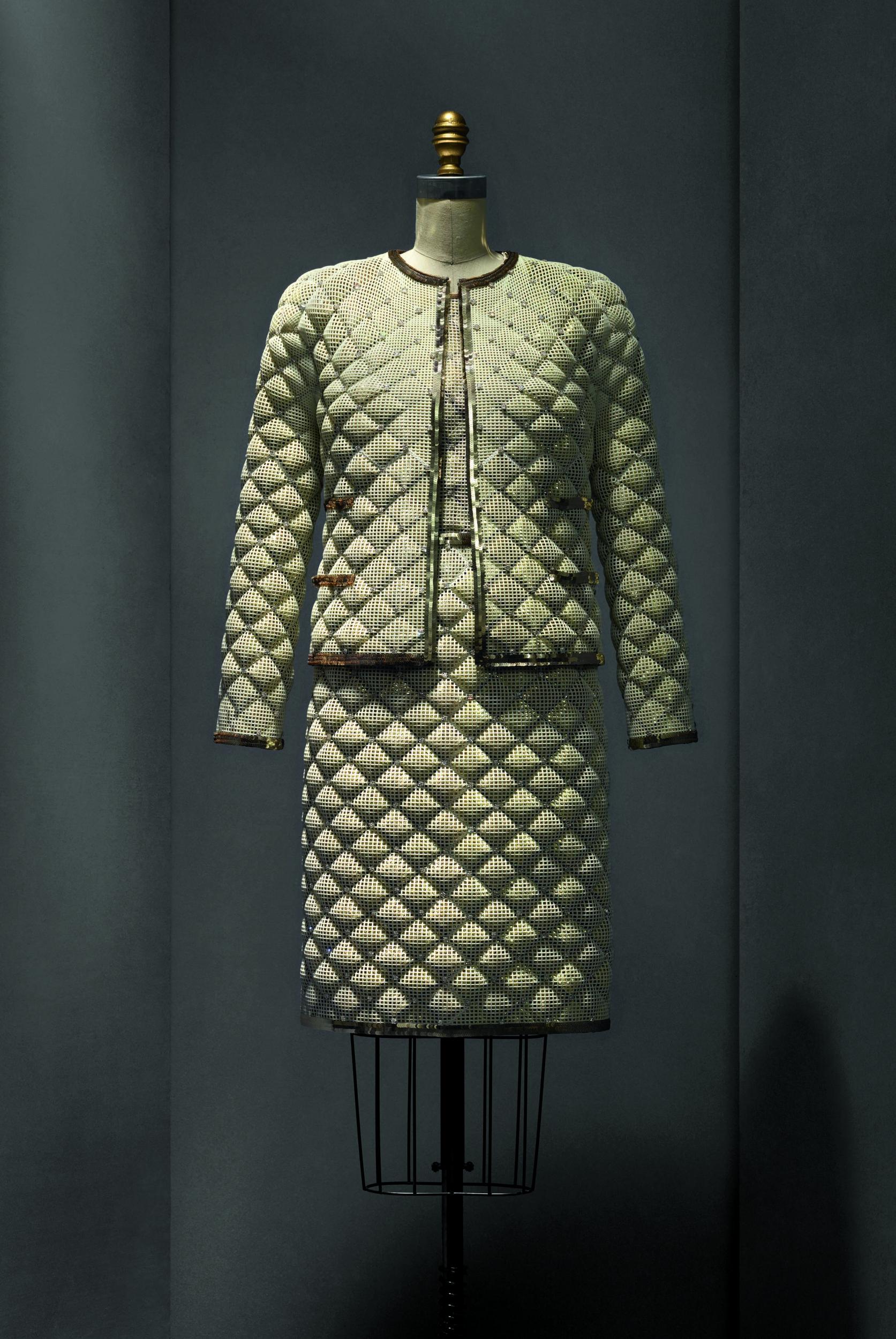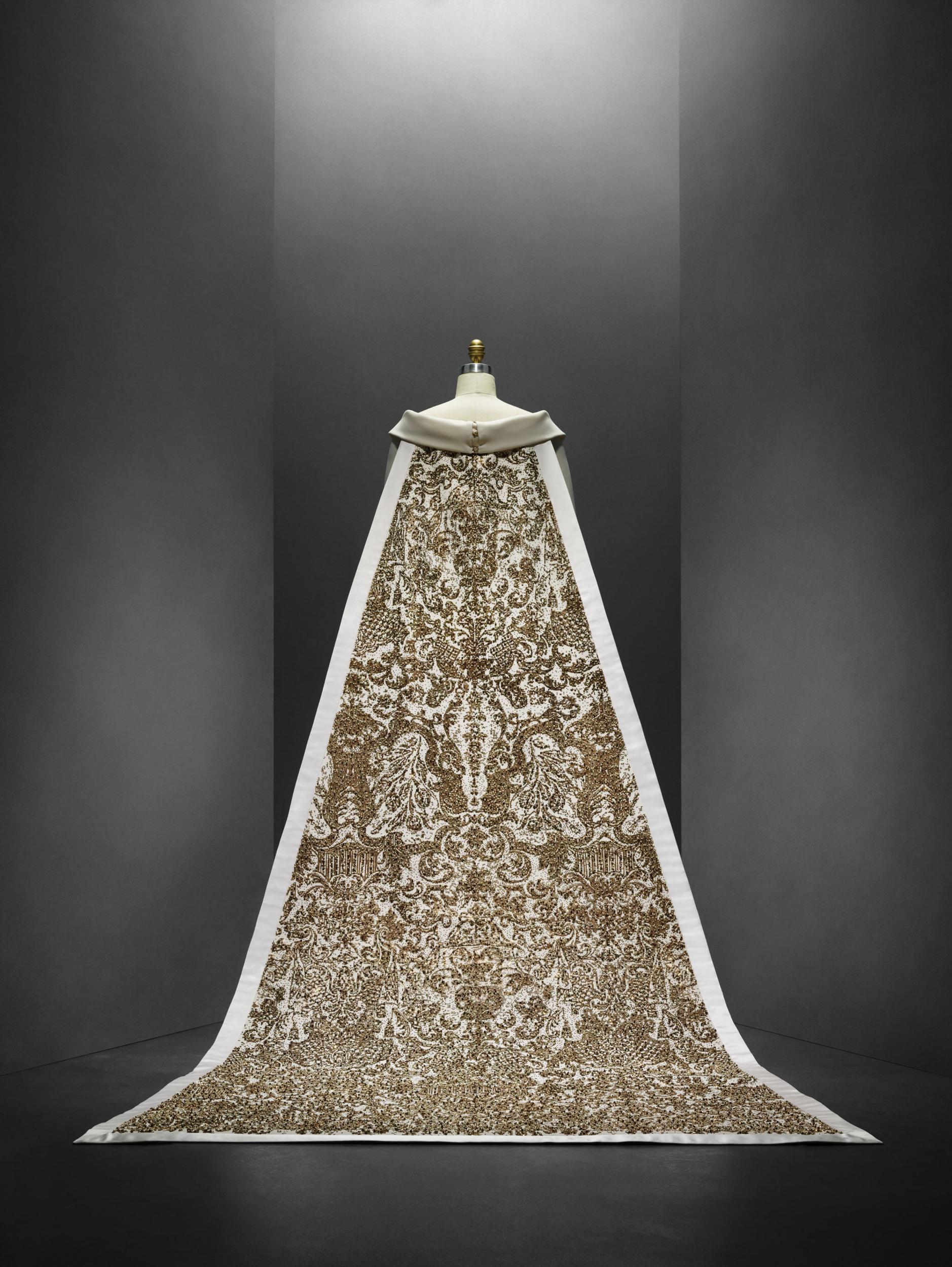Gala Benefits - fashion's Oscars now has its own feature film
The Met Gala has been transformed from a dusty, fusty benefit into a celebrity-packed multi-million netting extravaganza. As a documentary is released Stateside documenting last year's preparations, and the finishing touches are made to the latest installment, Alexander Fury dissects the most important night of fashion's year.

Your support helps us to tell the story
From reproductive rights to climate change to Big Tech, The Independent is on the ground when the story is developing. Whether it's investigating the financials of Elon Musk's pro-Trump PAC or producing our latest documentary, 'The A Word', which shines a light on the American women fighting for reproductive rights, we know how important it is to parse out the facts from the messaging.
At such a critical moment in US history, we need reporters on the ground. Your donation allows us to keep sending journalists to speak to both sides of the story.
The Independent is trusted by Americans across the entire political spectrum. And unlike many other quality news outlets, we choose not to lock Americans out of our reporting and analysis with paywalls. We believe quality journalism should be available to everyone, paid for by those who can afford it.
Your support makes all the difference.Each year, on the first Monday in May, the Costume Institute of New York's Metropolitan Museum of Art throws a party. The reasoning behind it is threefold: to launch the institution's major spring exhibition (this time round, the big idea is "Manus x Machina: Fashion in an Age of Technology"); to generate publicity around that opening, and spike visitor numbers; and to raise funds for the museum. It sounds simple, but is anything but. The event is officially the Met Gala, but over the past few years has begun to be referred to colloquially as the Oscars of the East Coast. The fashion author and commentator André Leon Talley, who worked at the Met in the seventies under special consultant and style doyenne Diana Vreeland, dubs it "the Super Bowl of social fashion events," but the latter limitations have been eschewed. Today, the Met Gala is as much about celebrity as it is about style.
Many people will assume that is its only reason for existence - in the same way that, at base, the Academy Awards are about an industry collectively patting itself on the back for its achievements. Far from it. "It is the major fundraiser for our department," says Andrew Bolton, the Costume Institute's Curator in Charge, via telephone. "When the Costume Institute was formed, it was with the understanding that the fashion community would support it. We are the only department in the museum that raises its own funds, in terms of our operation costs, staffing, and also funding for our exhibitions." That amounts to millions - in 2014, almost $12 million dollars (over £8 million) was generated by the event, by ticket sales to the fashion community. Each ticket costs $25,000 (the price was hiked in 2014) - a table for ten can set you back between $175,000 and $250,000. Then again, New York businesses pull in big bucks (Calvin Klein's 2014 retail was in excess of £5.6 billion).
The Met Gala, in various names and forms, has been in existence since the forties, but over the past twenty years it has been spearheaded by Anna Wintour, editor in chief of American Vogue - a post also held, coincidentally, by Vreeland in the sixties, prior to joining the Met in 1972. Wintour had been a co-chair of eighteen Met Galas in total - her first was in 1995 - and success has been stratospheric. The collision of fashion and celebrity at the Met is mirrored in the pages of Vogue - a dazzling array of covergirl co-chairs have drawn crowds to goggle, both online and in person. This year, Taylor Swift is the pull, alongside Idris Elba, Louis Vuitton's Nicolas Ghesquière, Karl Lagerfeld, Miuccia Prada and Apple's chief design officer, Jonathan Ive, a nod to the technological theme. Apple are also sponsors of the exhibition, another area where Vogue's involvement in pulling in key supporters has been key. The magazine's Director of Special Events, Sylvana Durrett, oversees the planning and execution of the gala - including table and ticket sales, fundraising, decor, the menu and catering, seating, and entertainment. Last year, Rihanna performed.

Durrett heads a full-time team of four, who plan in excess of thirty events a year. The Met Gala is by far the biggest - "It takes an army to get that gala up and running," murmurs Bolton "The level of detail is extraordinary." Accordinly, Durrett's team more than doubles to ten employees in the direct lead-up, and on the day of the Gala Vogue's working contingent is around 100. "It is traditionally a yearlong process with some, like last year's "China: Through the Looking Glass," taking closer to two years," commented Durrett to me, via email. A phone interview wasn't possible - in her own words, she was "in the home stretch, which means finalising seating, working out the details of the performance, and doing our best to plan for any last-minute changes." I felt fortunate I could get hold of her at all. "Anna works pretty far into the future," she continues, "so even if we are in the throes of one gala she is always thinking about and planning years ahead."
Wintour is seen by many as the majordomo of the Met - in 2014, Michelle Obama opened a redesigned wing christened The Anna Wintour Costume Center, in recognition of the liquid amount (roughly $150 million) Wintour has raised, alongside the priceless reams of publicity. "The amount of money that Anna has raised over the years... it can't be underestimated," says Andrew Bolton. "But at the same time, it generates so much publicity for the exhibitions. It's extraordinary. The shows sort of bask in the light of the gala coverage!" Plus, a fashion industry insider leading the Met is closer to the original remit Bolton outlines. Prior to Wintour, co-chairs included the socialites Jacqueline Kennedy Onassis (1977-1978) and Patricia Taylor Buckley (1979-1995). Wintour's influence has brought the Met to the very centre of the fashion universe. Its date is as fixed as those of the biannual fashion weeks.
For Bolton, a tie between the world of contemporary fashion and the museum's exhibitions is vital. "We don't plan very far ahead. And deliberately so - so we can respond to events, quickly. For instance, when McQueen died," states Bolton. "The V&A, unfortunately, is not able to respond so quickly, because they plan much further in advance." It isn't a random example: British-born and educated Bolton was a Senior Research Fellow in Contemporary Fashion at the Victoria and Albert, working in the museum for nine years before joining the Met in 2002. Hence the Met's themes tie perfectly with the fashion moment. This years exhibition, Bolton says, was first thought of eighteen months ago, and has been in the works seriously for nine - a blink of an eye in curatorial terms. Nine months ago, Karl Lagerfeld showed 3-D printed suits in his Chanel haute couture collection. The fragments of the suit were created via selective laser sintering, and then sewn together by hand. Manus, meeting Machina. One is one display in the Met.

In reflection of the star power - of the Gala, of fashion as a whole and specifically of Wintour, an entire documentary has been filmed devoted to the preparations of last year's Gala. Tied to the exhibition "China: Through The Looking Glass" - which, with 815,992 visitors, became the most popular in the Costume Institute's history (and the fifth most-visited exhibition at the entire Metropolitan Museum) - the feature film is devised along the lines of the successful 2009 offering The September Issue, charting the inner workings of both Vogue and the Metropolitan Museum in preparation for the Gala. Directed by Andrew Rossi and titled "The First Monday In May", it opened the Tribeca Film Festival in April, and is released in the UK come September. "The documentary on the Met gala is something Anna and I have been talking about for many years," says Durrett. "We knew we wanted to tell the story of the immense amount of work that goes into Andrew Bolton's exhibitions and the yearlong process of planning the party." "I knew that it would be a really good thing for the department," added Bolton.
Wintour herself makes a prescient statement in said documentary: "You need the mixture of art and commerce." That is, of course, what the Met Gala is all about. It's sometimes provoked ire when it has been seen to infiltrate the museum's exhibitions. Vreeland's 1983 retrospective of Yves Saint Laurent, the museum's first for a living designer, provoked outrage. Many saw it as a jumped-up marketing exercise - accusations also leveled at the coupling of Milanese fashion behemoth Miuccia Prada with Elsa Schiaparelli in 2012's "Impossible Conversations" (Incidentally, back in 1983 tickets to the YSL gala cost $500 - the equivalent of around $1,500-$2,000 today). In costume as in art, it seems, the deader the better - ideally without a business to hawk around their label. Charles James, the subject of 2014's exhibition "Beyond Fashion" who died in 1978 and whose design genius was tied to zero business acumen, was an ideal candidate).

That begins to touch on fundamental issues many have with fashion in museums, full stop. Isn't fashion fundamentally commercial? And where does one draw the line between commerce and art - if you can even call fashion that, at all? The Met Gala, however, is all-out commerce. Making money, for the Met. "What this shows," says Bolton - referring to the documentary, but equally a general statement about the Gala as a whole - "Is not just Anna's commitment to the department, or to fashion, but her commitment to the museum. She's deeply, deeply passionate about the museum." Who are the ultimate beneficiaries of the money, and the publicity. That's the fact many forget, when bemoaning the celebrity circus of the red carpet or critiquing the dresses worn to walk it.
Although as per a "fashion" event, they are generally more daring and unconventional than the Oscars roster. Some dress to the theme, with unfortunately pantomimic results. It is called a "Costume Institute," after all. If you can't stump up the $25,000, look forward to watching it unfold online, come the first Monday in May.

Join our commenting forum
Join thought-provoking conversations, follow other Independent readers and see their replies
Comments